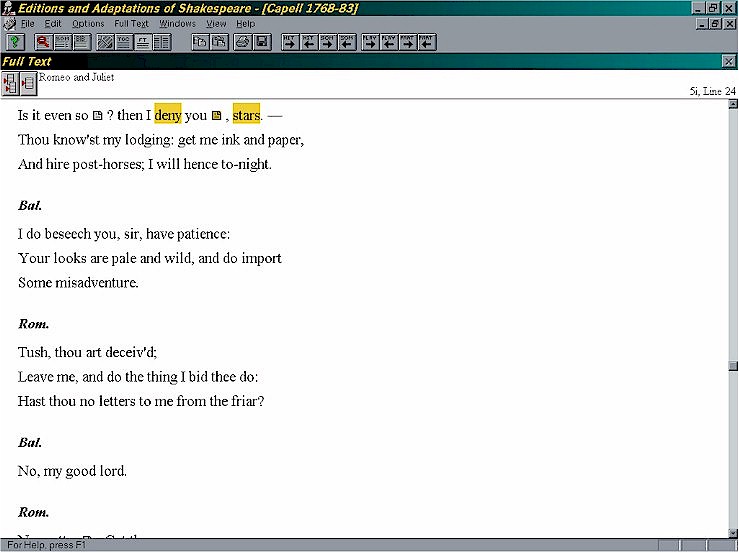
Chadwyck-Healey Editions and Adaptations
of Shakespeare delivered via Literature Online (LION, an Internet service, £450 per
year for 4 simultaneous users on one site, additional users £45 each) of on CD-ROM (ISBN
0-85964-271-2) £850 per disk which may be networked to all users on one site
http://www.chadwyck.co.uk
Hardy M. Cook, Bowie State University ghcook@bowiestate.edu
Antony and Cleopatra (Dryden, Garrick and Capell; Kemble, Francis Burnand)
As You Like It and A Midsummer Night’s Dream (Charles Johnson)
As You Like It (John Carrington)
Cardenio (Theobald)
The Comedy of Errors (Thomas Hull, Frederick Reynolds, John Poole)
Coriolanus (Nahum Tate, John Dennis, Thomas Sheridan, Kemble)
Cymbeline (William Hawkins, Thomas D’Urfey)
The First Part of King Henry the Fourth (anon, Betterton)
The Second Part of King Henry the Fourth (Betterton)
Hamlet, Prince of Denmark (anon, Davenant, Betterton, Garrick, Poole, Kean, and William
Gilbert)
Julius Caesar (John Sheffield, and Kemble)
King Henry the Eighth (Charles Kean)
King Henry the Fifth (Aaron Hill and Charles Kean)
King John (Colley Cibber)
King Lear (Tate, George Colman, R. W. Elliston, Edmund Kean, Charles Kean, and Macready)
King Richard the Second (Tate, Theobald, Wroughton, Charles Kean, and Cibber)
King Richard the Third and The Third Part of King Henry the Sixth (Cibber)
King Richard the Third (anon)
Love’s Labour’s Lost (anon)
Macbeth (Davenant, Charles Kean, and Francis Talfourd)
Measure for Measure and Much Ado About Nothing (Davenant)
Measure for Measure (Charles Gildon)
The Merchant of Venice (George Granville, Talfourd, and Charles Kean)
The Merry Wives of Windsor (John Dennis)
A Midsummer Night’s Dream (anon, Betterton, Richard Leveridge, Lampe, Garrick, Colman
and Garrick, Colman, and Charles Kean)
Much Ado About Nothing (James Miller and Charles Kean)
Pericles, Prince of Tyre (Lillo)
Romeo and Juliet (Otway, Theophilus Cibber, and Richard Gurney)
King Henry the Sixth plays (John Crowne, Ambrose Philips, Theophilus Cibber, and John
Merivale)
The Taming of the Shrew (John Lacy, James Worsdale, and Garrick)
The Tempest (Dryden, Davenant, and Shadwell; Thomas Duffet; Garrick; Anon.; Kemble;
William and Robert Brough; and Charles Kean)
Timon of Athens (Thomas Shadwell, Richard Cumberland, and George Lamb)
Titus Andronicus (Edward Ravenscroft)
Troilus and Cressida (Dryden)
Twelfth Night (William Burnaby)
The Two Gentlemen of Verona (Benjamin Victor)
The Two Noble Kinsmen (Davenant)
The Winter’s Tale (Garrick, Macnamara Morgan, William Brough, and Charles Kean)




